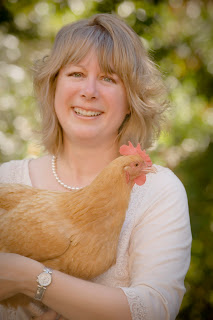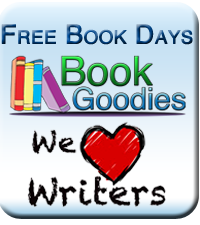She’s here today to talk with us about one-sheets, a simple bit of marketing collateral you can make should you find yourself in an agent or editor appointment, and I am delighted to welcome a fellow member of my RWA chapter.
So, what’s a one-sheet?
The one-sheet is a snapshot of your book or series, your market research, and your bio, all on—you guessed it—one page. These have been used for years in the Christian market and in the music and videogame industries (just search on “one-sheet” in Google Images to see what I mean). On this one piece of paper, the editor has everything she needs to know to begin a productive conversation about your book. It also gives her some unwritten but clear information about you, the author: that you’re market savvy, have done the legwork to answer her questions in advance, and have thought about marketing yourself as well as your novel—all skills that will serve you well in a writing career.
Not bad for an 8.5 x 11” piece of paper, eh?
So let’s look at the one-sheet, section by section, and see how it not only presents your book in its best light, but how it can organize your thinking as well for the writing process.
Section 1: The Book
The most important section, and the one given visual importance on the page, contains the back-cover copy for your book. Two or three paragraphs tell the reader about your characters, the central conflict, the setting … and end with a story question. Here’s an example from the first book in my steampunk series, Lady of Devices:
London, 1889. Victoria is Queen. Charles Darwin’s son is Prime Minister. And steam is the power that runs the world.
At 17, Claire Trevelyan, daughter of Viscount St. Ives, was expected to do nothing more than pour an elegant cup of tea, sew a fine seam, and catch a rich husband. Unfortunately, Claire’s talents lie not in the ballroom, but in the chemistry lab, where things have a regrettable habit of blowing up. When her father gambles the estate on the combustion engine and loses, Claire finds herself down and out on the mean streets of London. But being a young woman of resources and intellect, she turns fortune on its head. It’s not long before a new leader rises in the underworld, known only as the Lady of Devices . . .
When she meets Andrew Malvern, a member of the Royal Society of Engineers, she realizes her talents may encompass more than the invention of explosive devices. They may help her realize her dreams and his . . . if they can both stay alive long enough to see that sometimes the closest friendships can trigger the greatest betrayals . . .
The back-cover blurb is designed to pique reader interest—and gives the editor a starting point for a productive conversation about your characters and plot development.
If you’re pitching a series rather than a single book, you can lay out the one-sheet in landscape orientation and arrange three back-cover blurbs across the page. Then, in a paragraph that spans all three, you can give a series overview, describing the main plot and themes. This will save space so that you don’t have to repeat it in the book descriptions, allowing you greater detail in the individual blurbs below.
Section 2: Your Bio and Contact Information
This section should be 100-150 words, giving your credentials for writing the book, your experience, contest wins, and education. Use your bio from your website if you have one, so that your “collateral,” or marketing materials, are all consistent. Include your website and email address so that if the editor wishes to contact you for more, she can do so easily.
Section 3: Market Research
If you have room, or you’re using a double-sided sheet, think about including your market research. I once proposed a teen series featuring a group of antagonistic high-school girls, slowly drawn together as they created the dresses of their dreams. My market research included quotes from articles that had recently appeared in Publishers Weekly and Time about teens getting into crafting, and mentioned books by NYT bestsellers set in the knitting and scrapbooking communities. Show the editor that your book has a market, and she will have less work to do when she takes your proposal to the editorial meeting.
Optional: Tag Lines and Quotes
Many authors include tag lines on their websites and signature lines to give readers a quick, witty way to remember them and their books.
· Harlequin American author Lee McKenzie writes “fifty shades of pink.”
· Debbie Macomber promises, “Wherever you are, Debbie takes you home.”
· “Steampunk with spirit” is my tagline for the Magnificent Devices series. It’s both a promise and a description.
· The women’s fiction series I proposed under my Adina Senft pseudonym, about an Amish herbal healer (and which recently sold from a one-sheet), is called Healing Grace, and the tagline is “Healing grace in Amish gardens.”
Another option is to use a particularly telling quote from your manuscript—something that encapsulates the theme of your book. I used “A lady of resources makes her own luck,” one of the heroine’s lines. This line appealed to a reader so much that she created a poster of it along with my book covers, and sent it to me!
Recommended: Use images to create a mood
Editors tend to be visual people—even if they’re not creating cover art and page layouts, they still give professional input in both those areas. So consider including images that convey the style and mood of your book, its setting, maybe even its characters. Use your own photography or buy images from stock photo sites, and make your one-sheet even more memorable.
Does the one-sheet really work?
So far, I've sold two trilogies on a one-sheet alone, so I can vouch for how well they work. Give your inner graphic designer some freedom and see what you can come up with. Then at your next editor appointment, see how well it works. You never know—one sheet of paper might start a chain of events that ends with a book contract!
Learn more about Shelley and her books at http://www.shelleyadina.com or http://www.adinasenft.com. And be sure to check out her summer blog series, Letters from the Lady, in connection with the Magnificent Devices books, at http://magnificentdevices.wordpress.com.
Shelley presented a workshop on One-sheets at a chapter meeting. I rushed home and made one for each of my series. Here's the one for The Montbryce Legacy series.
 |
| Front and back |
 |
| Inside |










A great idea! Thanks for sharing. :)
ReplyDeleteWhat a wonderful piece of advice. Thanks for sharing! I have to give it a try!
ReplyDeleteI can't say I've sold a series from the one sheet but it did help to get agent interest and a request for partials from three! And I only spent a couple of hours total sobI'd count that a success!
ReplyDeleteShelley and Anna
ReplyDeleteThank you for sharing Shelley's one-sheet ideas in this post. After taking a couple amazing workshops with Shelley I've worked hard on developing them for my stories. Not only are they effective out there in the big world of pitching, but I find them immensely helpful to me as a story writer. Now I write with not my one-sheet in mind.
Shelley you are brilliant, and I can't thank you enough.
Best Wishes
Jo-Ann
Thanks for sharing this.
ReplyDeleteTweeted.
I've never heard of a one sheet before but it sounds like it's far more fun to create than a synopsis.
ReplyDeleteI've never heard of this either but I love the idea, thank you!
ReplyDeleteThanks so much for sharing your one-sheet idea!
ReplyDeleteWonderful blog - and yet more work for the poor author LOL
ReplyDeleteGreat blog! I love the concept of a one-sheet. And your one-sheets, Shelley and Anna, sound and look absolutely amazing!
ReplyDeleteThanks, Jacqui! Up until five years ago, I'd never heard of one, either, but then I realized they were common in music and other markets. And they're particularly handy for what Jo-Ann said--getting the story down in a nutshell at the outlining stage. I make them for all my books and series now, even if no one sees them but me!
ReplyDeleteThanks so much Shelley. It's so useful to be able to use a structure that can help a writer get back on track. Very helpful.
ReplyDeleteThanks for the post! I've never heard of this, ubt it sounds very effective. I can't wait to try it.
ReplyDeleteWhat a wonderful idea! Thanks for sharing.
ReplyDeleteTerrific post! Thanks for sharing. I'm going to give this method a try.
ReplyDeleteBest--Adele
Great idea--it's good to have different types of marketing materials. I just had Vistaprint make a tri-fold brochure. It's got contact info on the outside & opens up to covers & tag lines for all my books. Colorful and easy to mail! M. S.
ReplyDeleteThis is a great idea. I'm not pitching to anyone, but it seems useful to organize everything, and also would be a good handout if I went anywhere (modified, maybe, to appeal to readers). Thanks for sharing.
ReplyDelete